Foudia madagascariensis
Least Concern
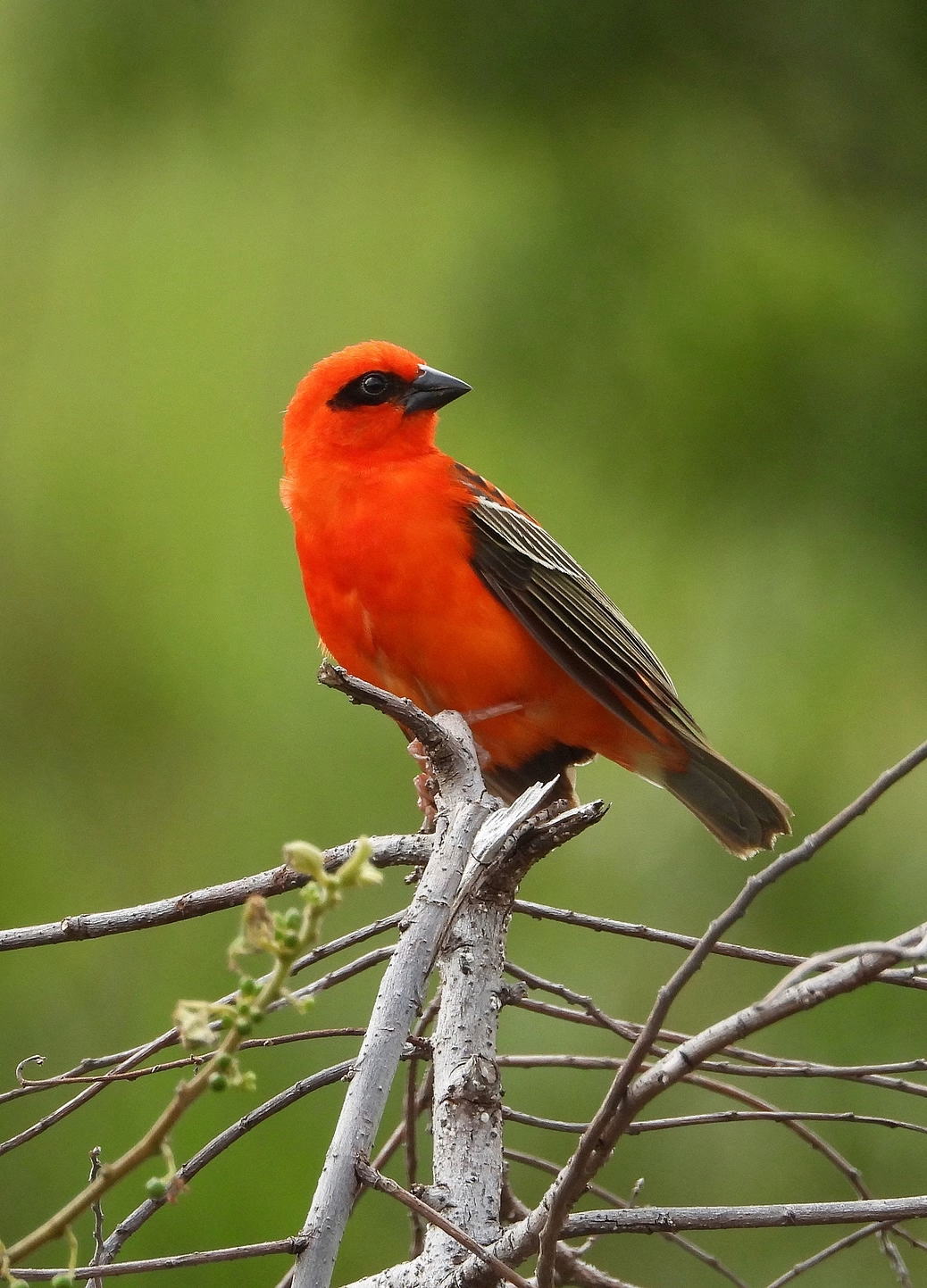
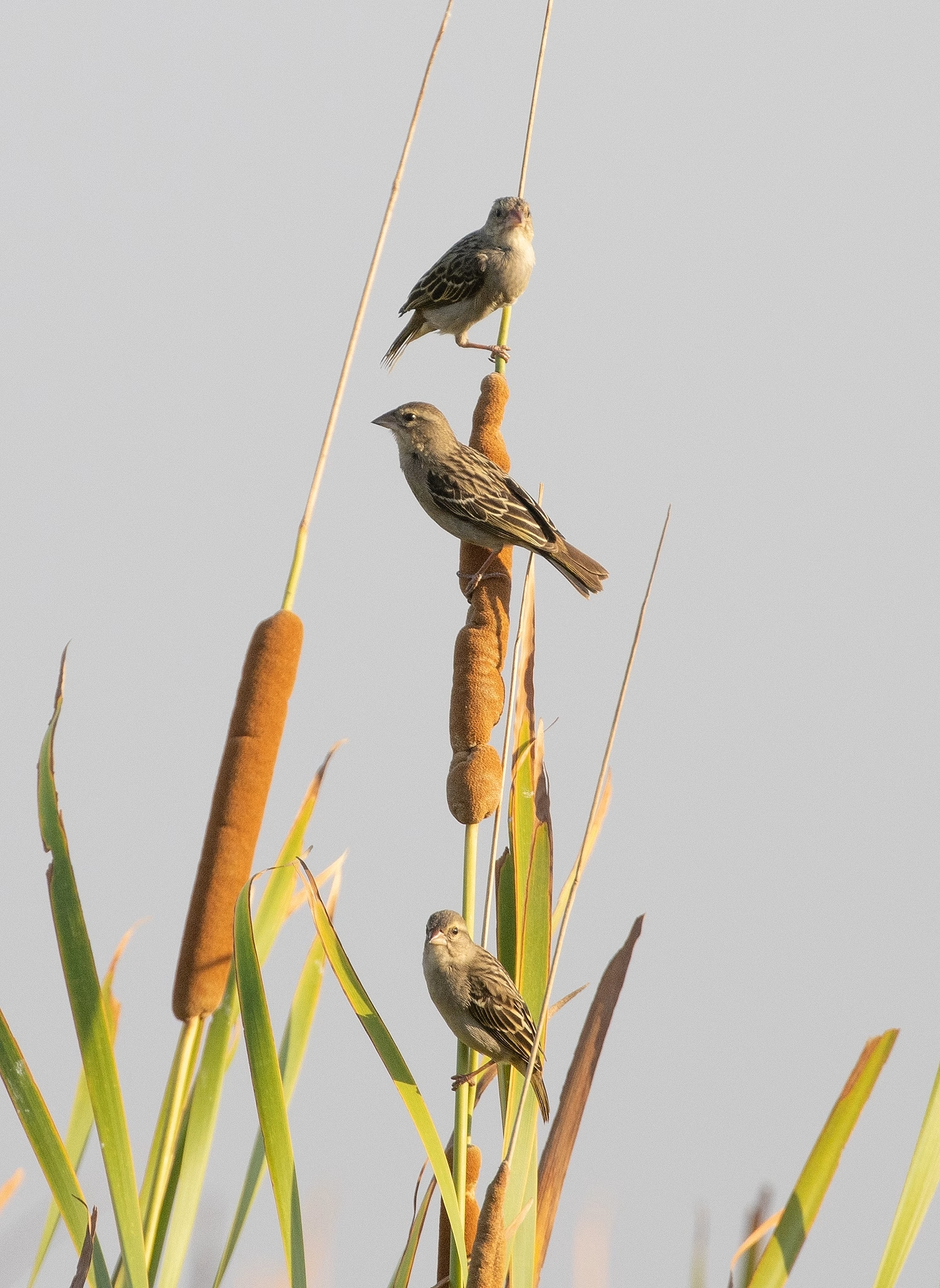
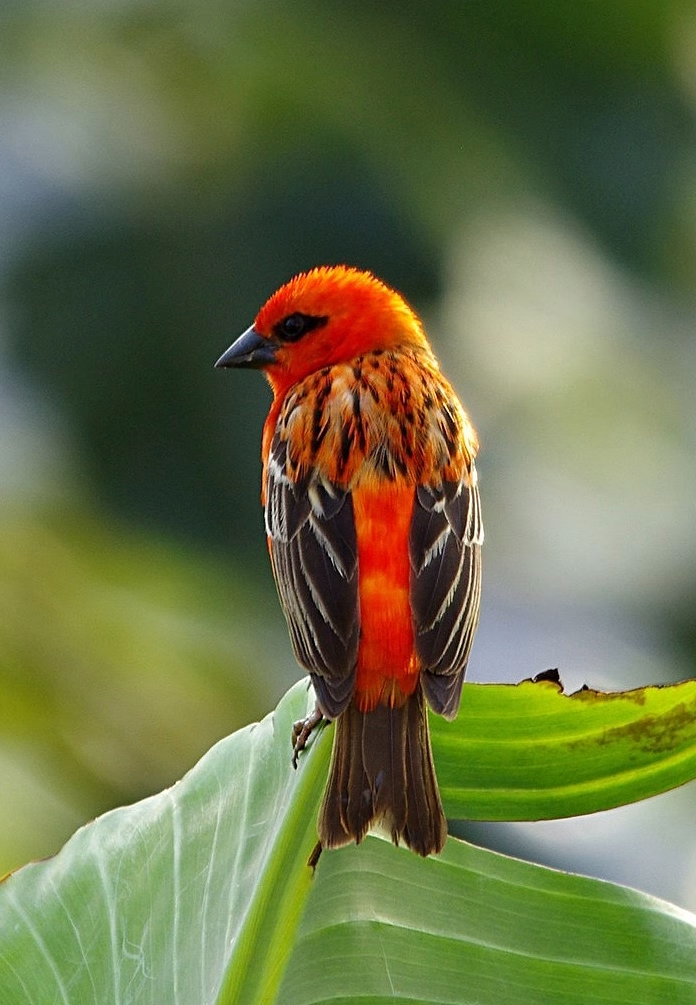
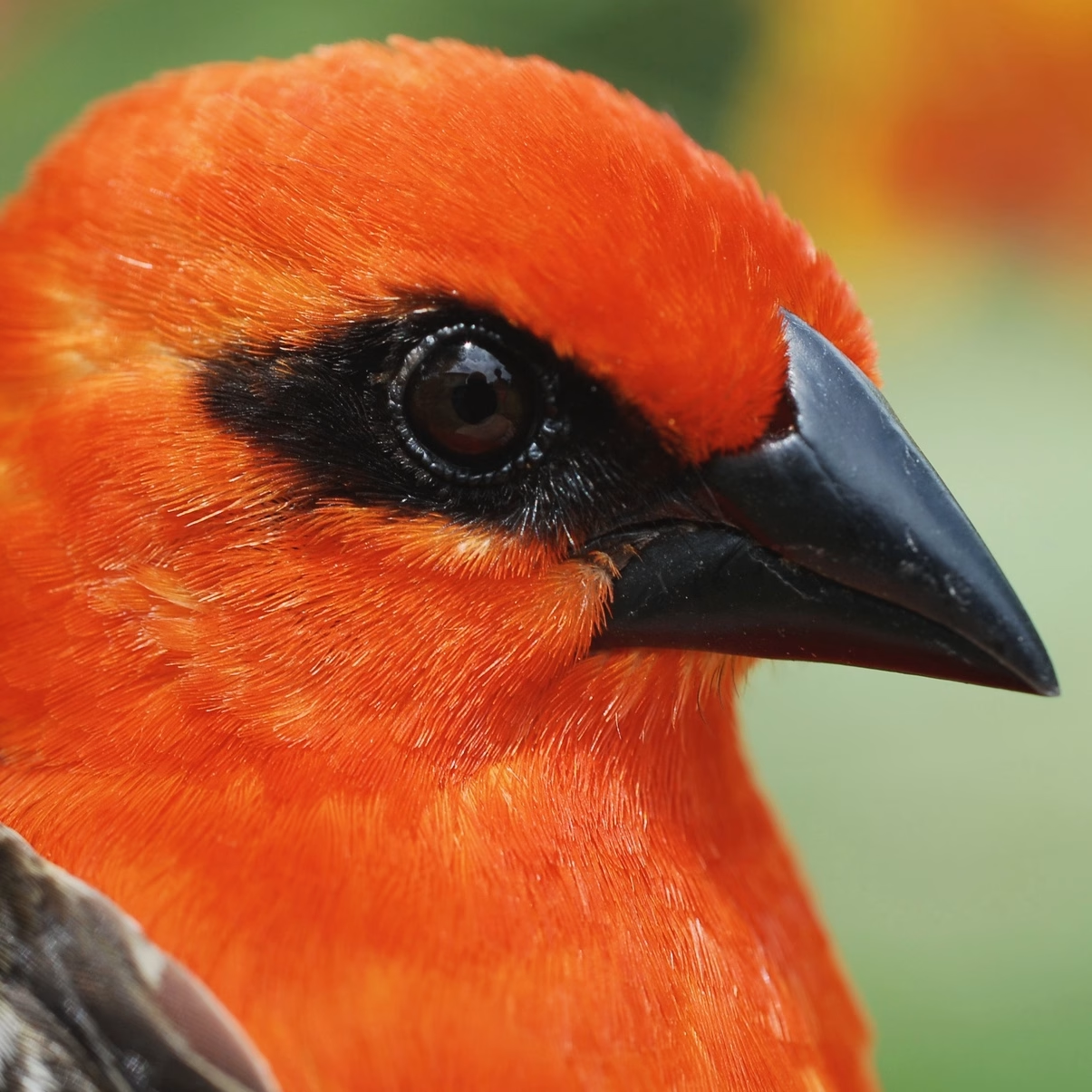
STATUS
Least Concern
SIZE
5.9 in (15 cm)
HABITAT
Grassland
Savanna
Open Woodland
Farmland
DIET
Seeds
Insects
Flower Nectar
LIFESTYLE
Diurnal
Arboreal and Terrestrial
Social
THREATS
Habitat Loss

INTERESTING FACTS
The red fody is part of the weaver family of birds, which are known for their intricately woven nests. Madagascar’s fody is closely related to species of weavers found in Africa.
Only males develop the vibrant scarlet-red color, and they only have it during the breeding season.
A large portion of this bird’s diet is seeds, particularly from grasses, which includes rice and wheat. This can be a problem for farmers if the birds flock to their fields.
Characteristics
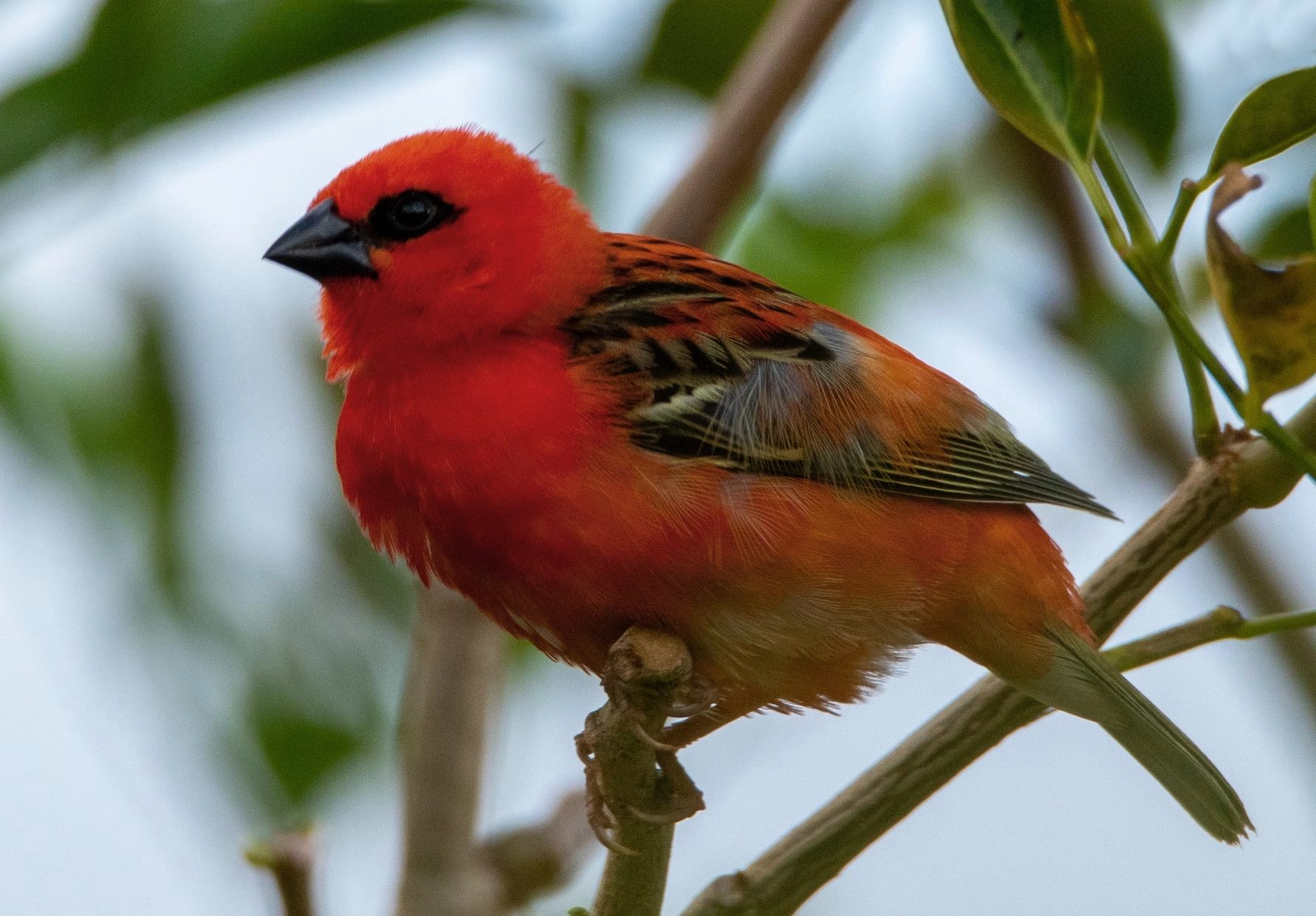
Madagascar’s fody is a favorite with bird watchers, photographers, and avian enthusiasts. It’s easy to see why when the males sport their spectacular crimson color during breeding season. This flamboyant red is a key characteristic in attracting females. The redder, the better! It has also given the bird a place in local folklore: the red fody’s vibrant plumage is believed to be a gift from the gods, a symbol of passion and vitality.
The rest of the year, the males lose their ruby red and take on a more subdued olive-brown, similar to the females. Though not as eye-catching as the scarlet, this subtle coloration is mixed with interesting patterns on the wings and achieves its own elegance. Yet another “look” is the in-between phases of juvenile males and males coming into or going out of breeding season—the splotches and tufts of red and orange might even make you think it’s a different bird altogether!
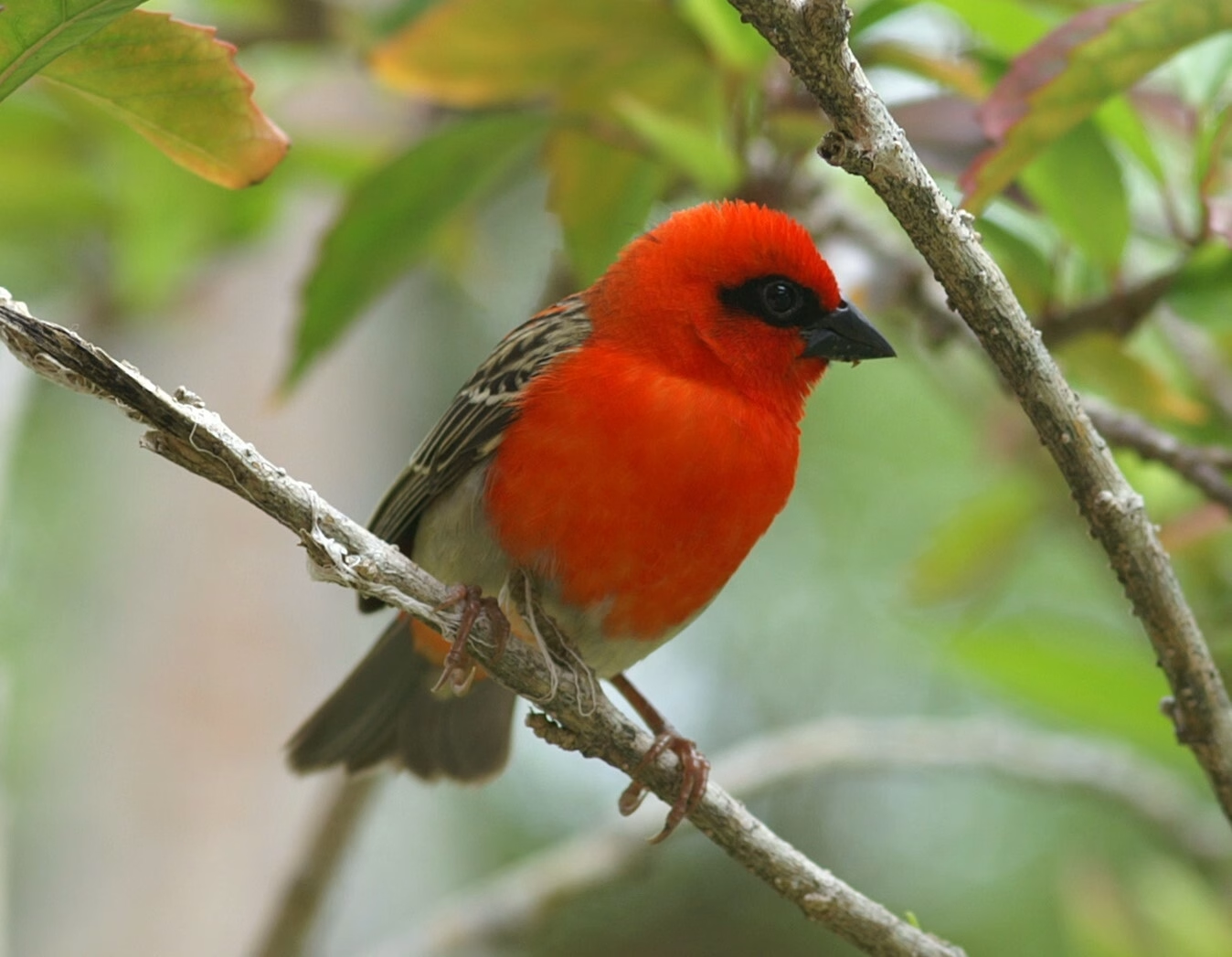
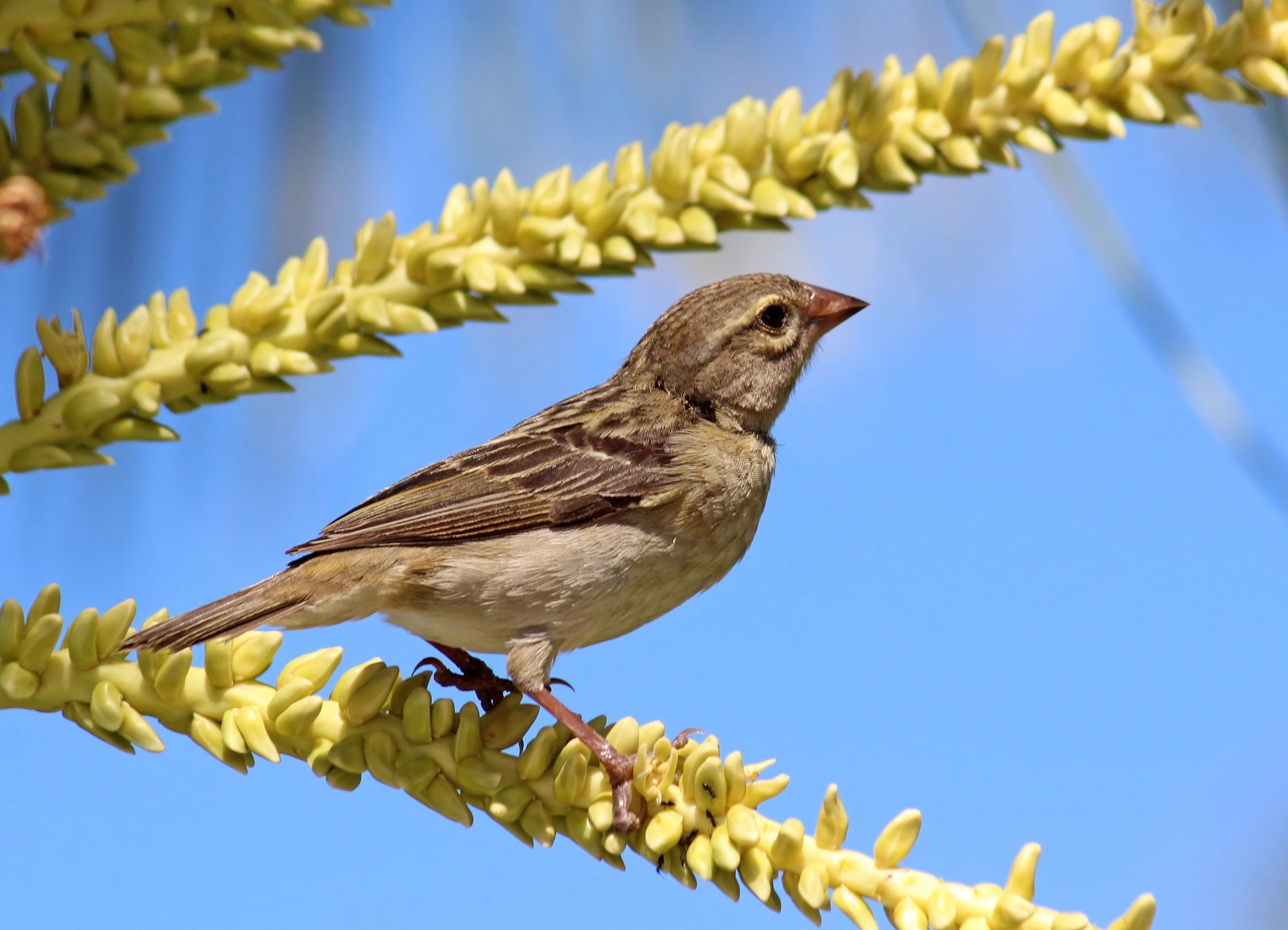
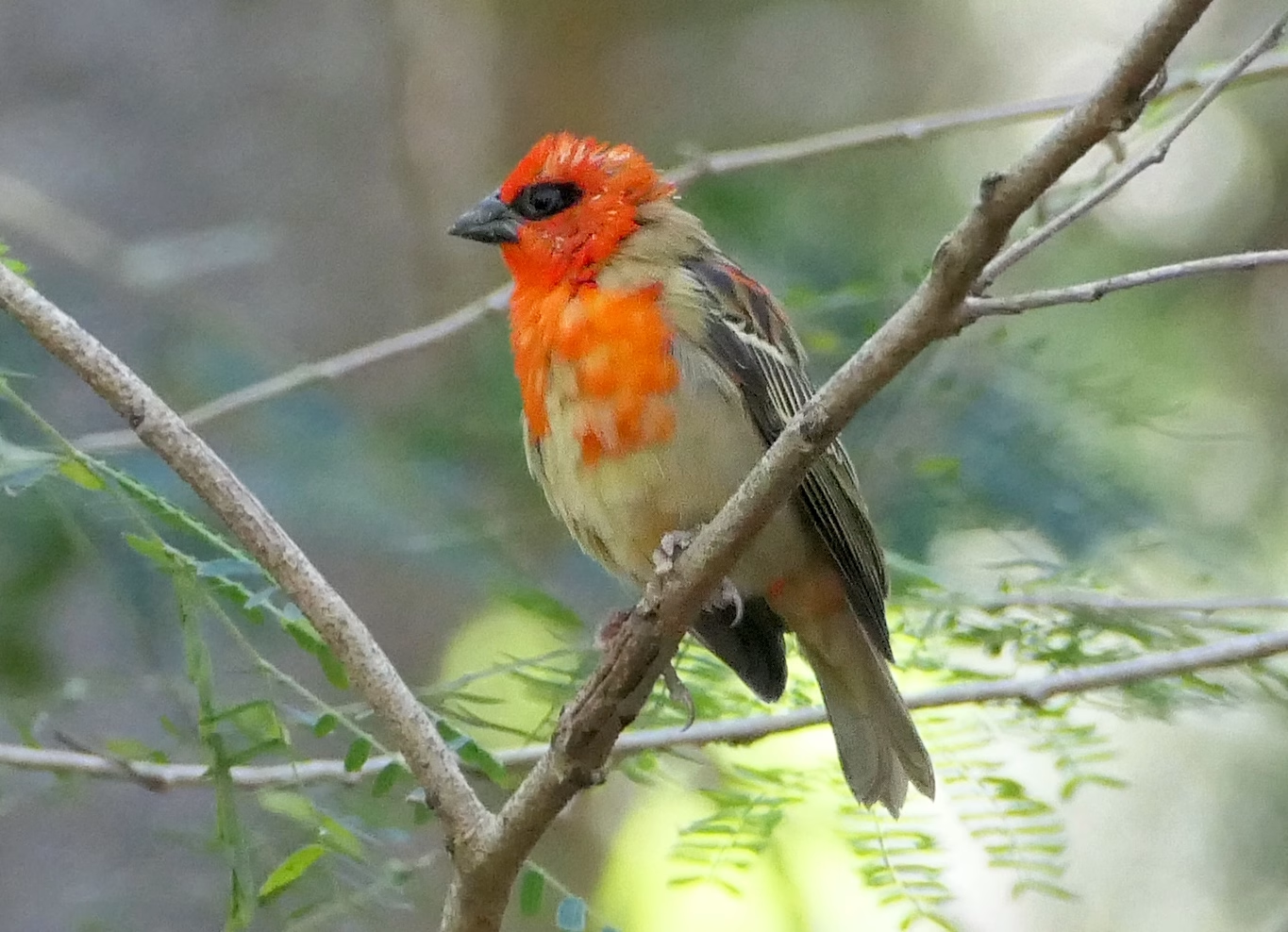
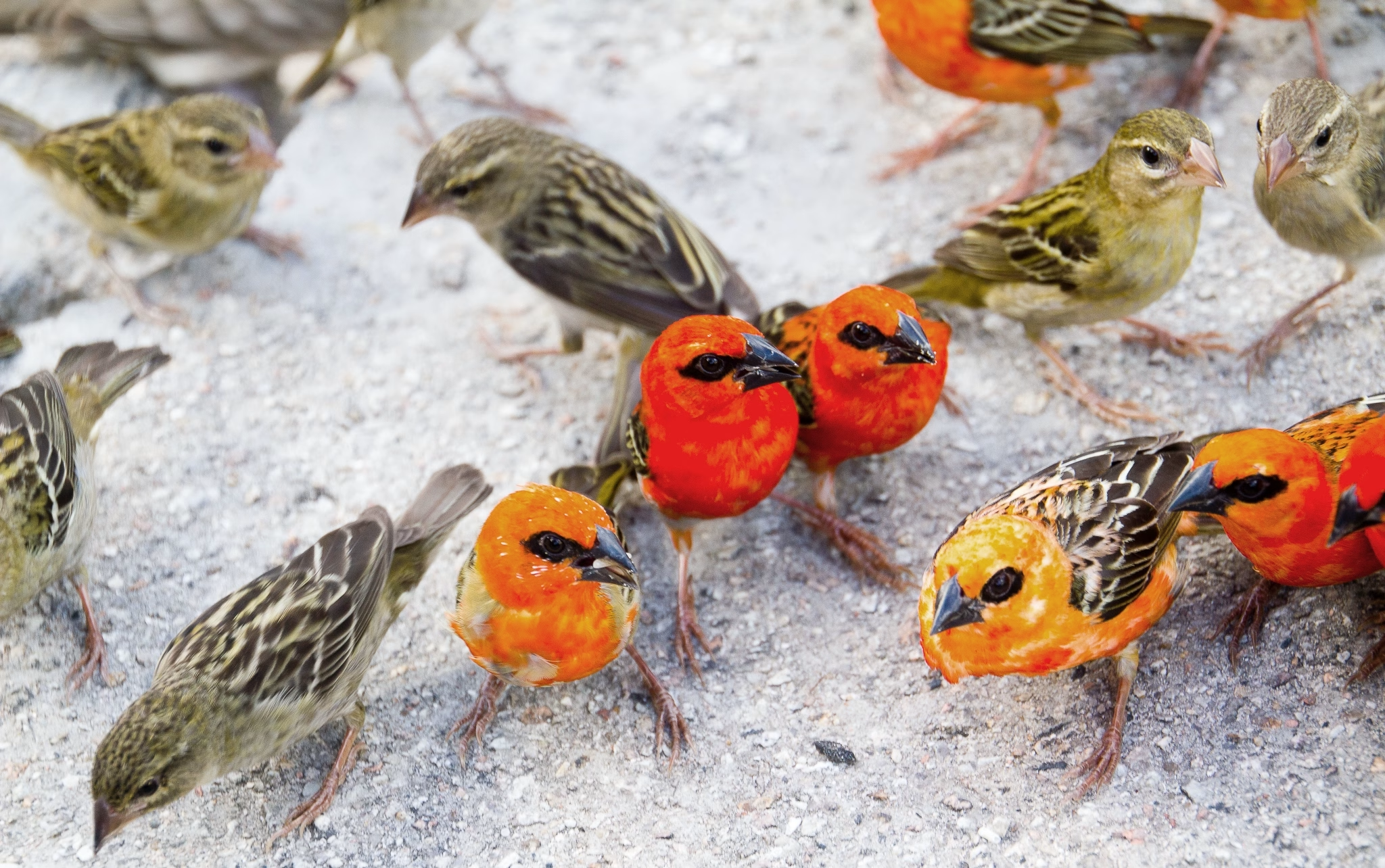
Behavior
These versatile, lively, and active birds can be found in most habitats in Madagascar, except in the interior of thick rainforests. They are often found in mixed flocks of males, females, and juveniles, and sometimes they mingle with other types of birds. Unsurprisingly, since the red fody is a species of songbird, its call is a long series of high, silvery notes forming a melodious song that it uses to communicate with other members of the flock.
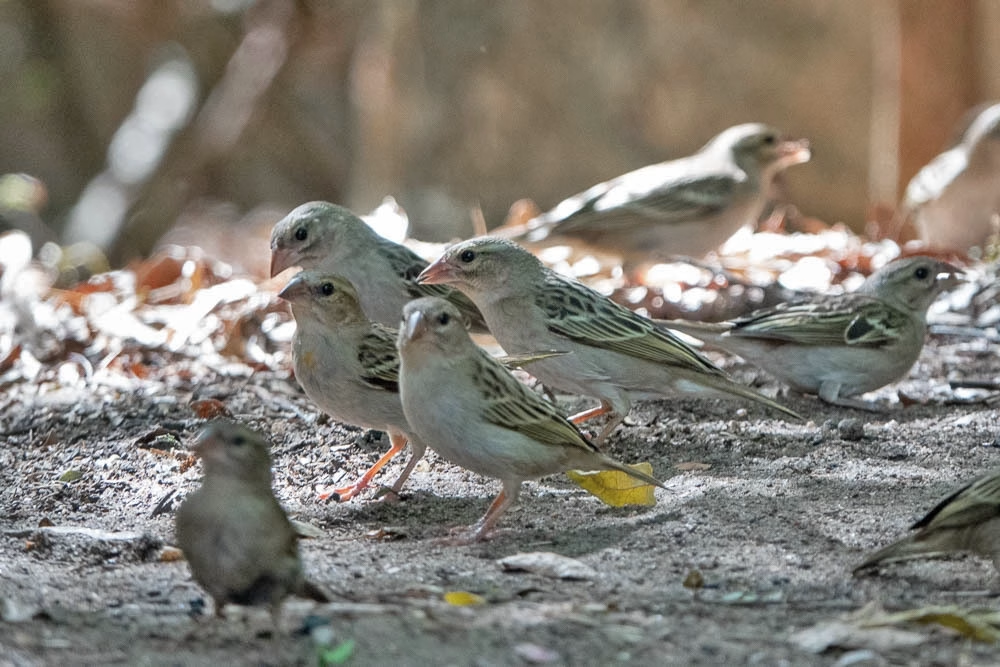
Diet
The red fody is omnivorous, mainly eating seeds and insects. Seeds from plants in the grass family form a substantial part of its diet. The stout, cone-shaped structure of the beak is a clue, a feature the fody shares with other seed-eating birds. It is perfectly crafted for this purpose, cracking open seeds with ease.
When catching insects, the fody’s keen eye and swift movements come in handy. During breeding season, when nutrient demands are high, these birds may increase their intake of insects to ensure they get the energy-giving extra protein they need.
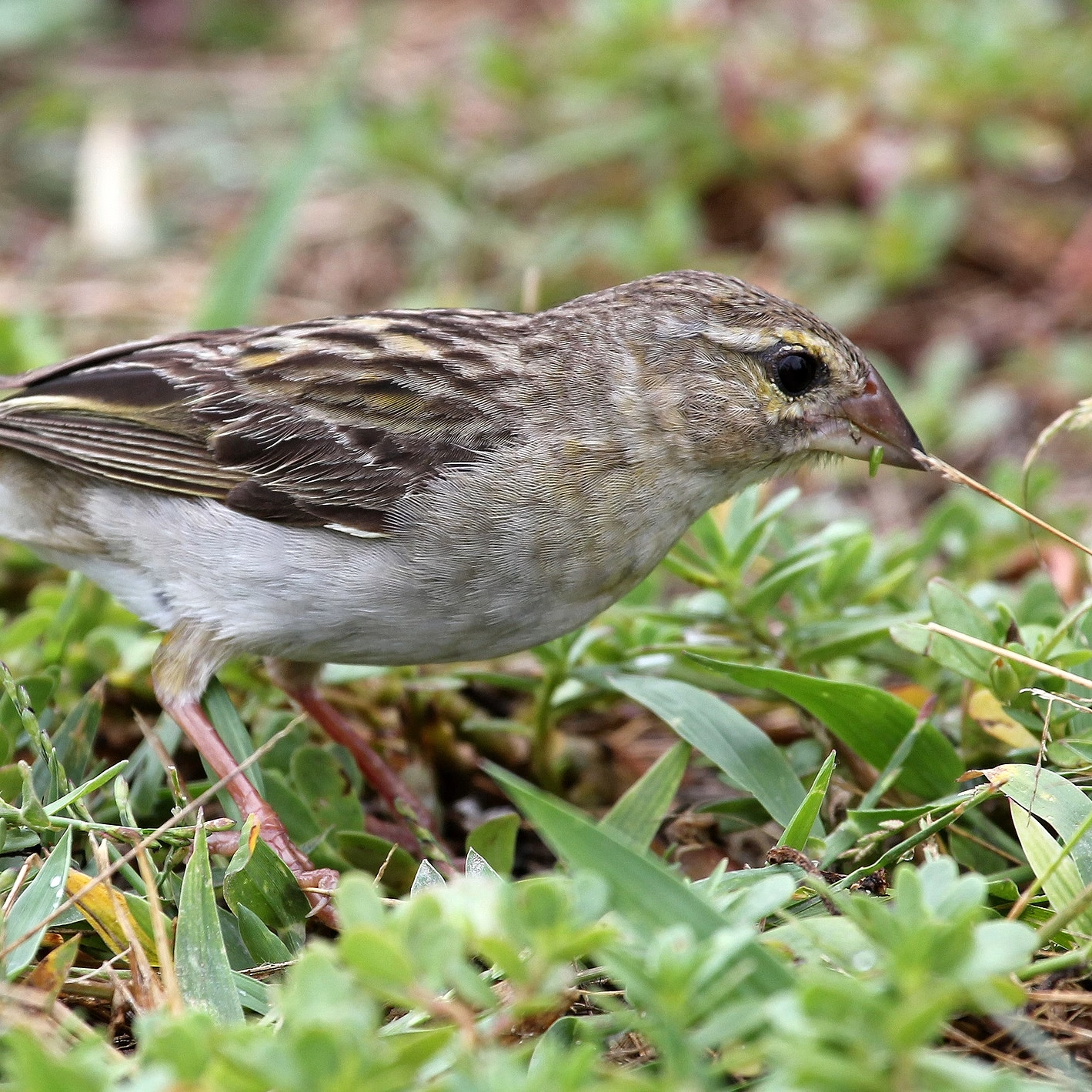
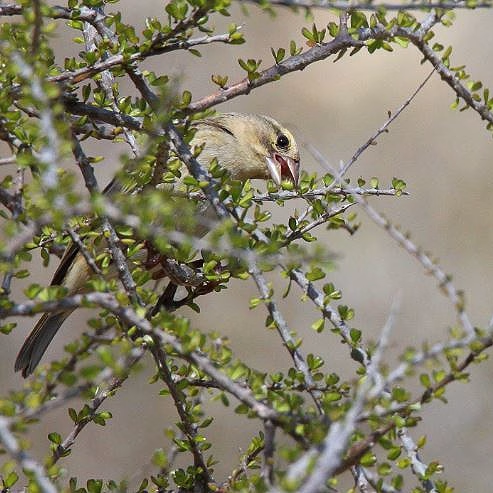
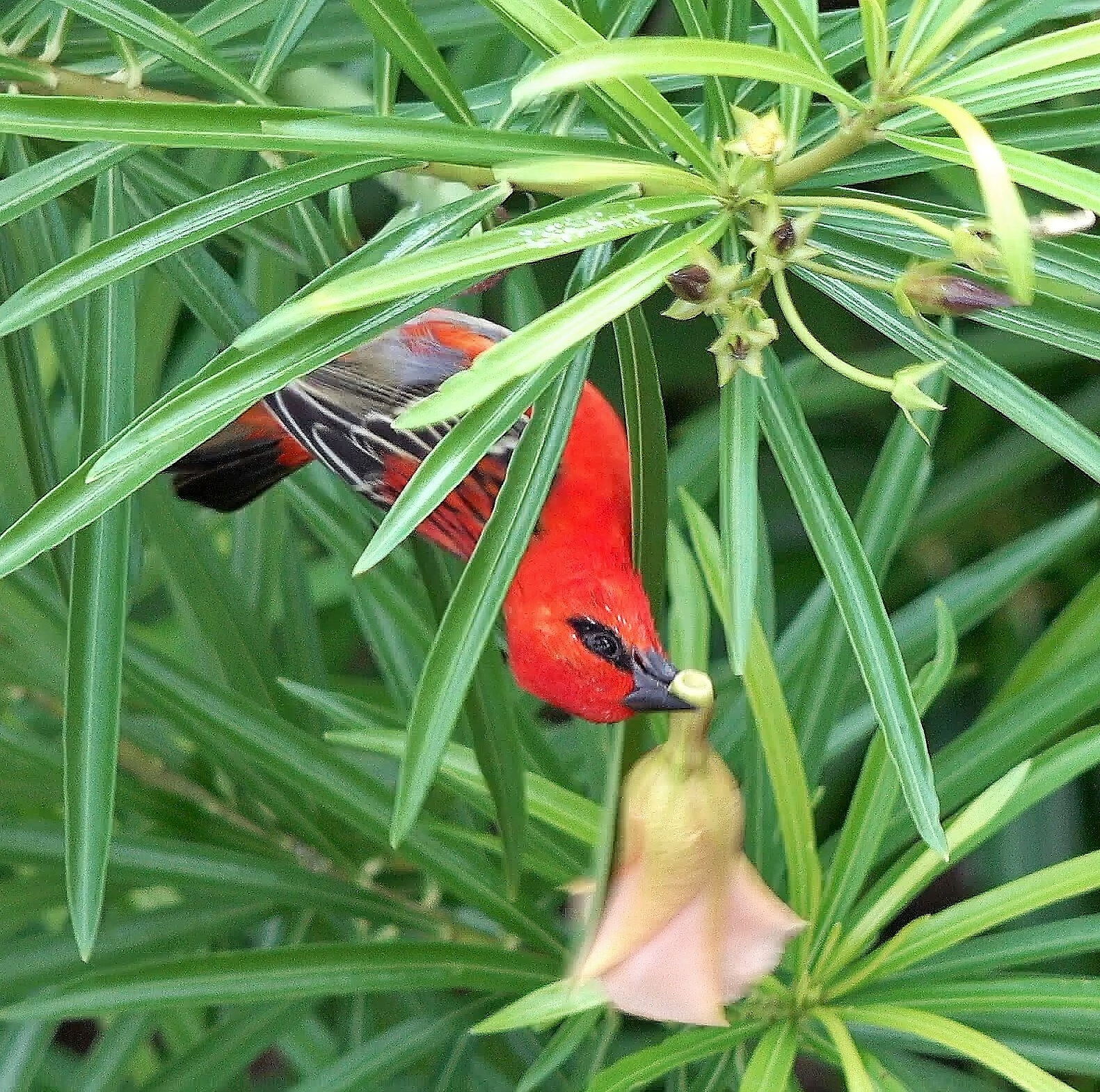
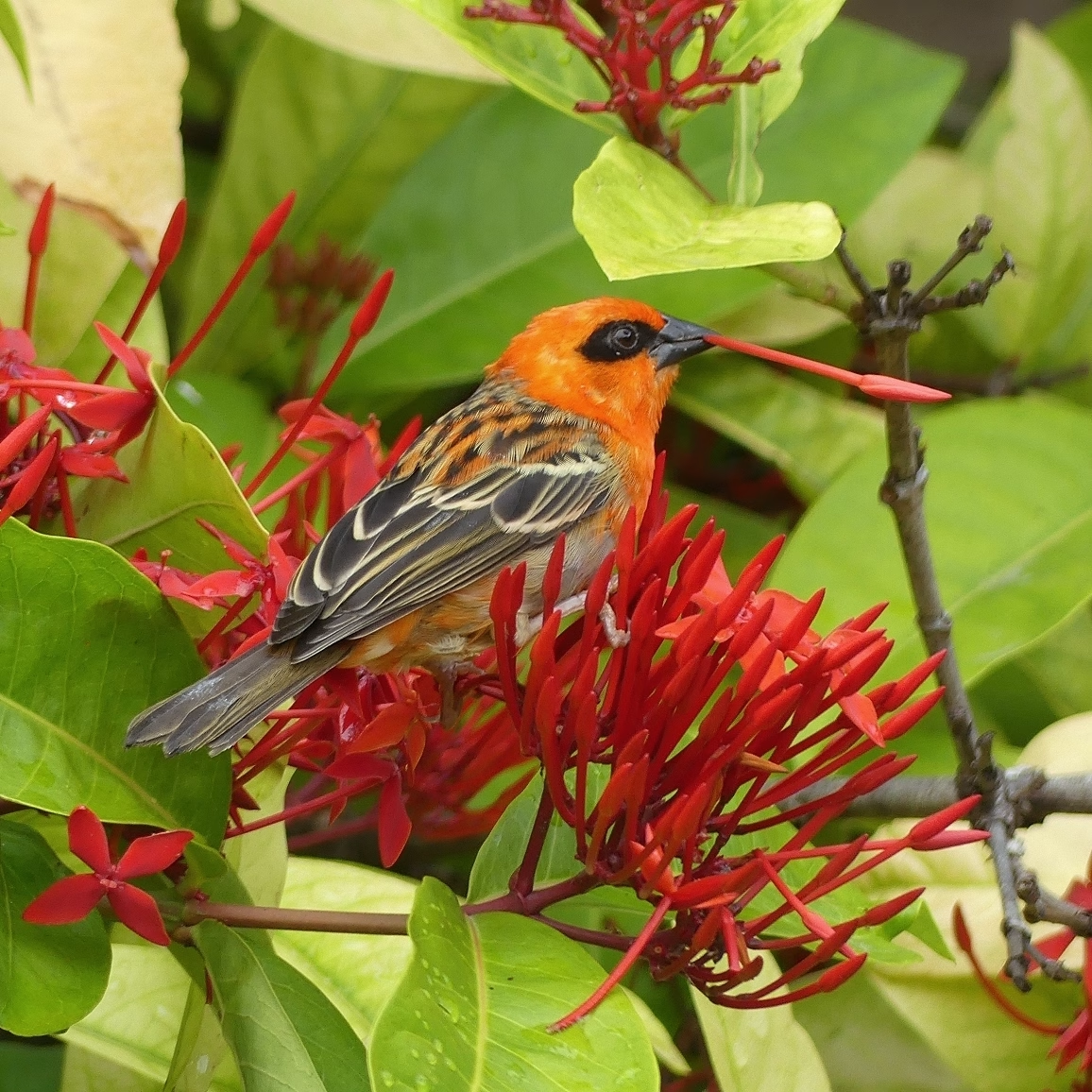
The fody also has a fondness for flower nectar, a sweet treat that also provides energy. But without a long, thin beak, how to reach it? These birds have that all figured out: pluck the flower from the base, where the nectar pools, and lick it up from there!
Habitat
The red fody can be found flitting about in open woodlands, grasslands, and even human-altered landscapes such as gardens and parks, making it a familiar sight for both residents and tourists throughout Madagascar. Many a gardener would testify to spotting these vibrant birds in their flower beds and trees. While originally native to Madagascar, this bird has shown impressive adaptability, extending its presence to several Indian Ocean islands. Its versatility in successfully inhabiting both natural and human-dominated landscapes is a testament to the bird’s resilience and evolutionary success.
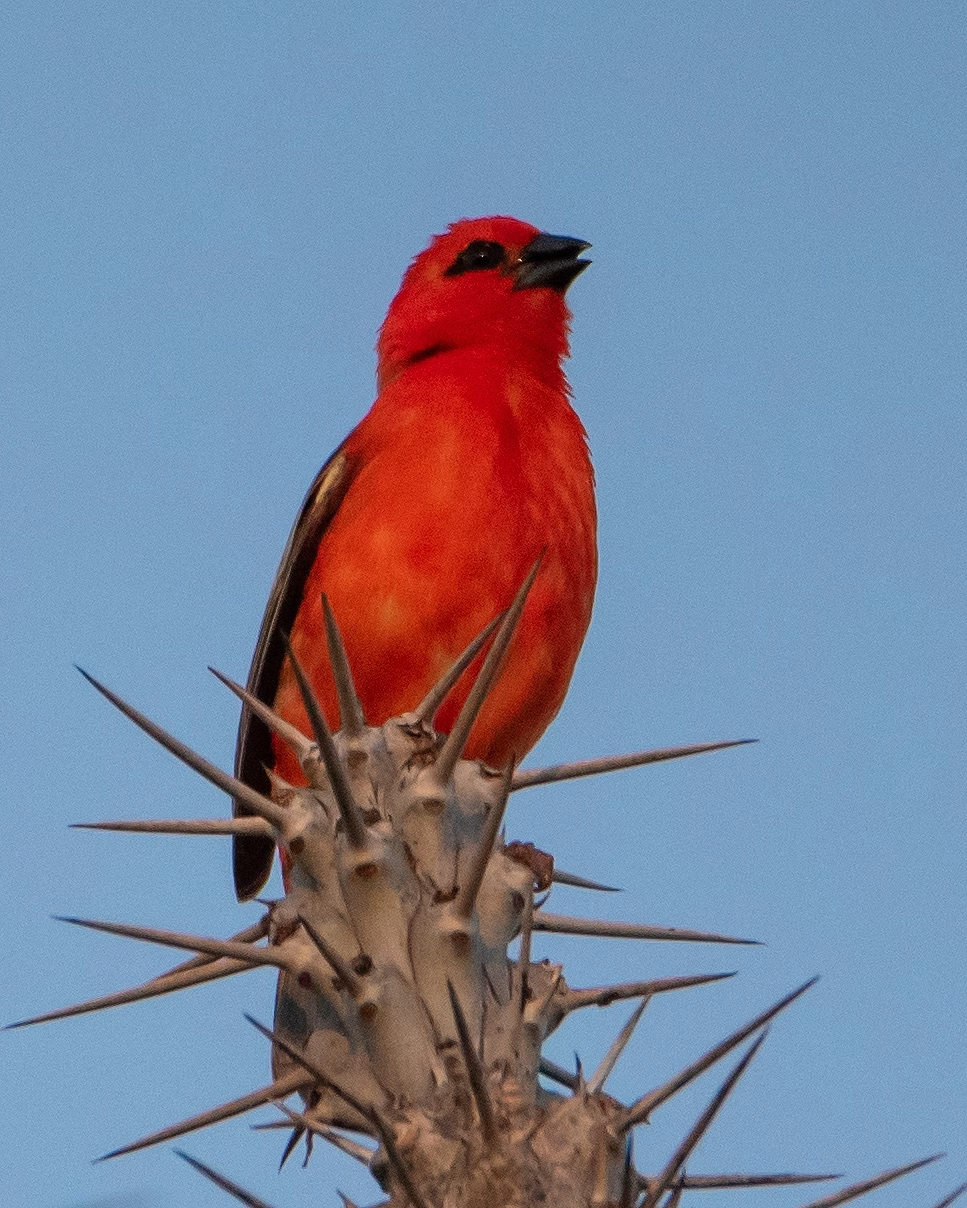
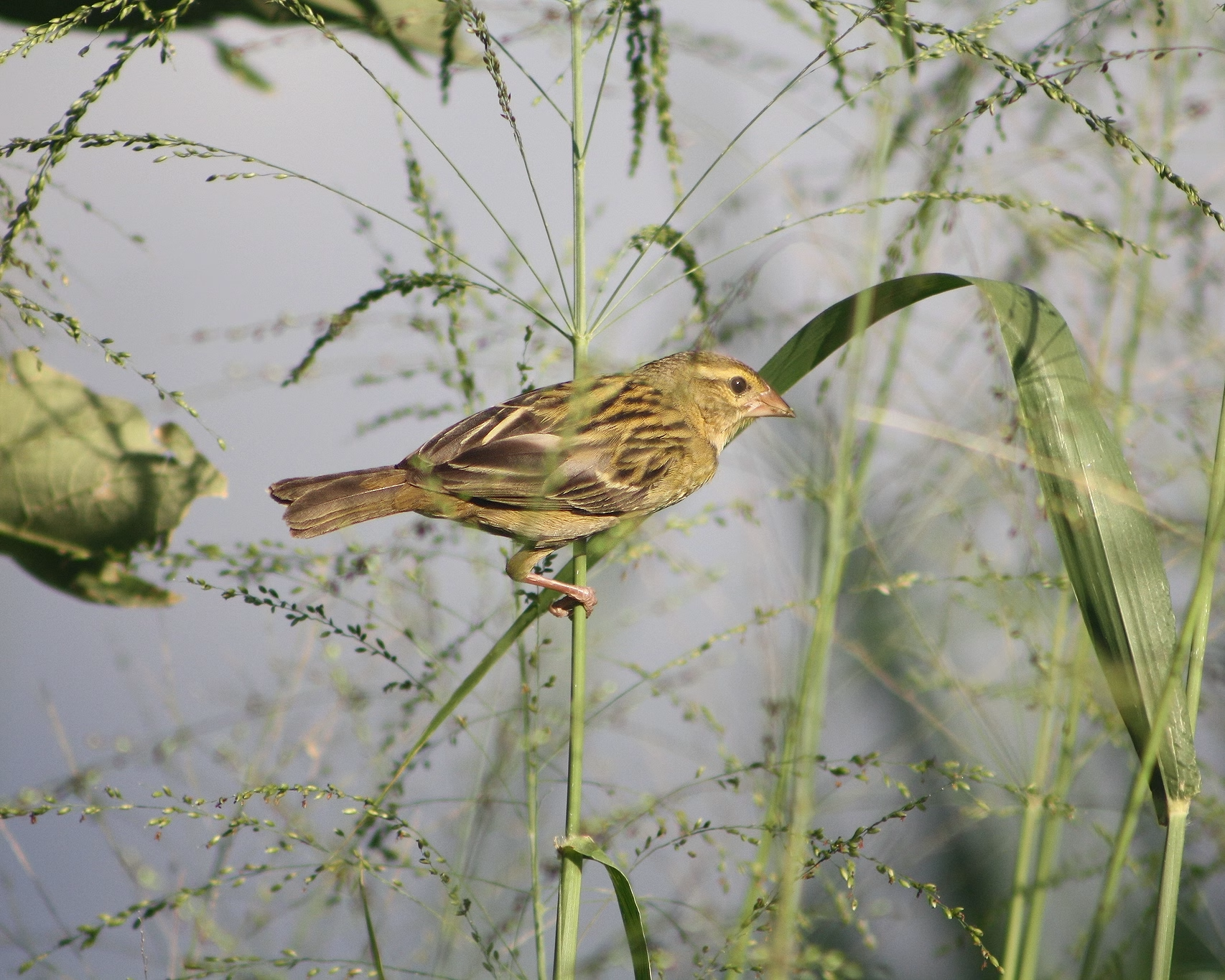
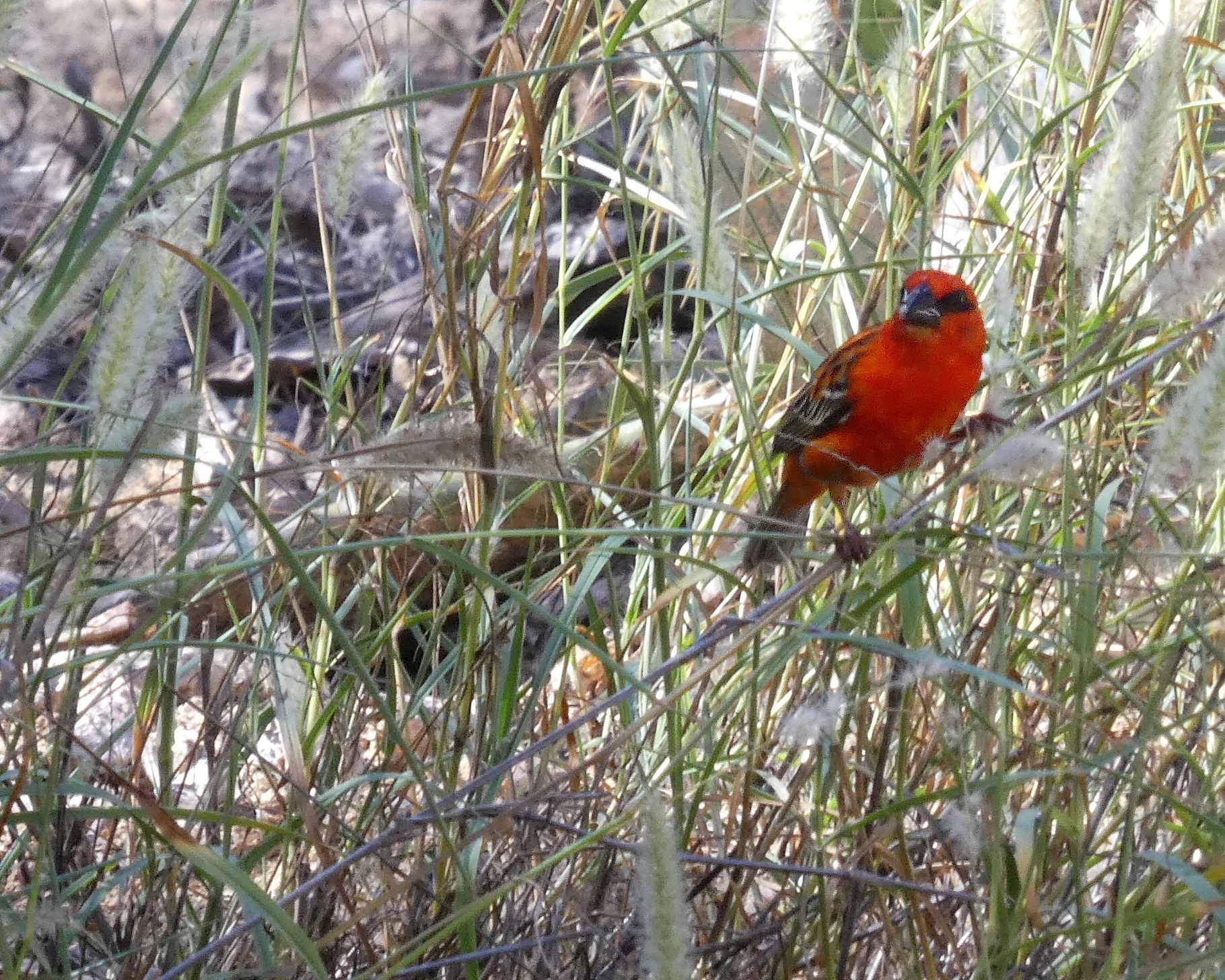
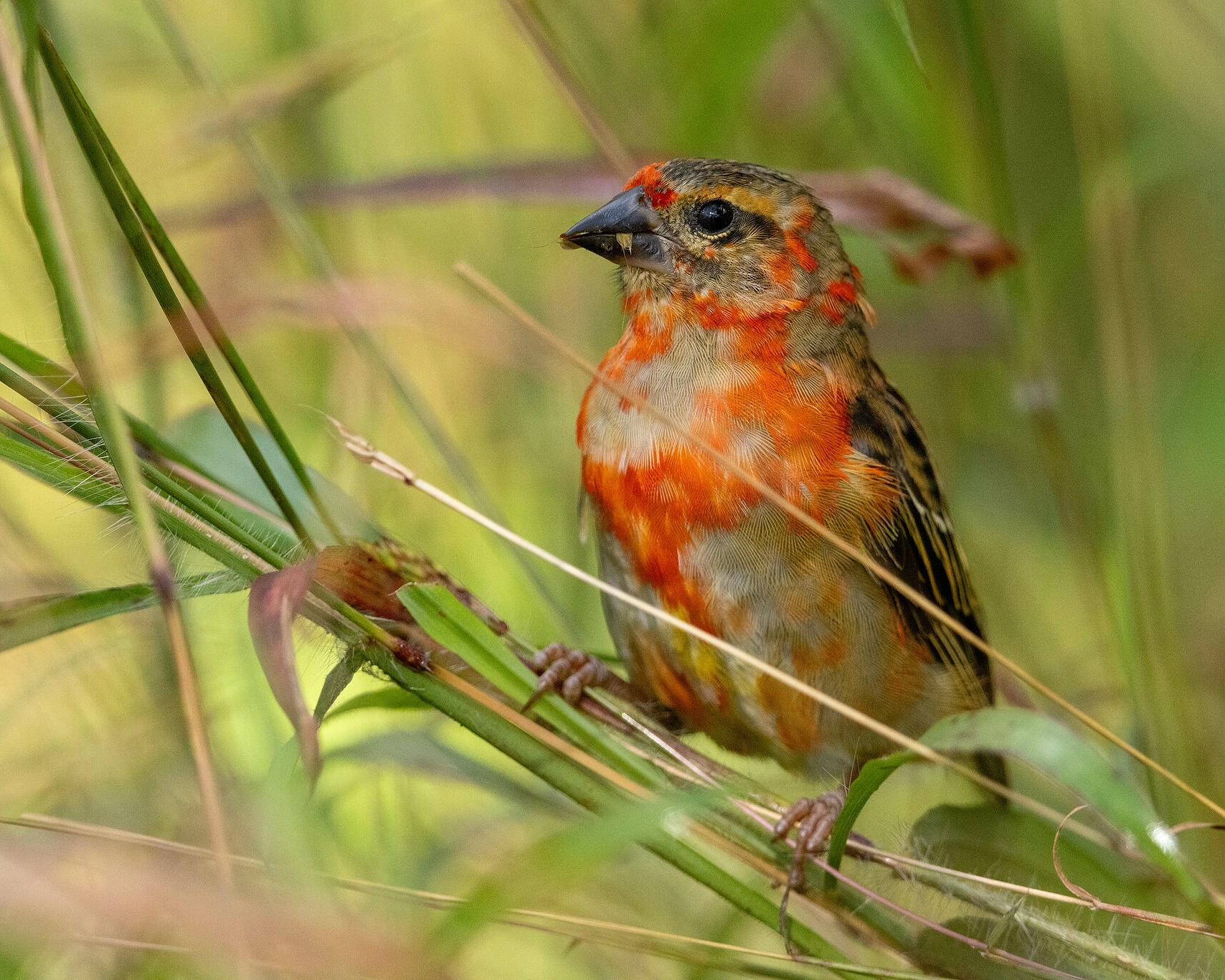
Reproduction and Life Cycle
The breeding season is between September and May, and male fodys have their work cut out for them. At the start of the season, they become territorial, don their scarlet-red plumage, and begin building a nest. The nests are spherical in shape, made of grass blades and thin sticks. Like their fellow weavers, red fodys are adept at using their beak and feet to weave the materials in and out, over and under, forming a dome with a side entrance that is sometimes extended into a short tunnel. The nests are usually attached to and often hang suspended from coconut palms, trees, branches of shrubs, or reeds. This creates a strategic position that provides protection for the eggs and chicks from ground-based predators.
The quality of the male’s nest, in combination with the vibrance of his red color, are what attract a female to be his mate. If she seems hesitant, the male may also perform aerial acrobatics, diving and swooping to impress her. Once she’s convinced, the two then bond as a pair for the season and defend their nest and surrounding area from others.
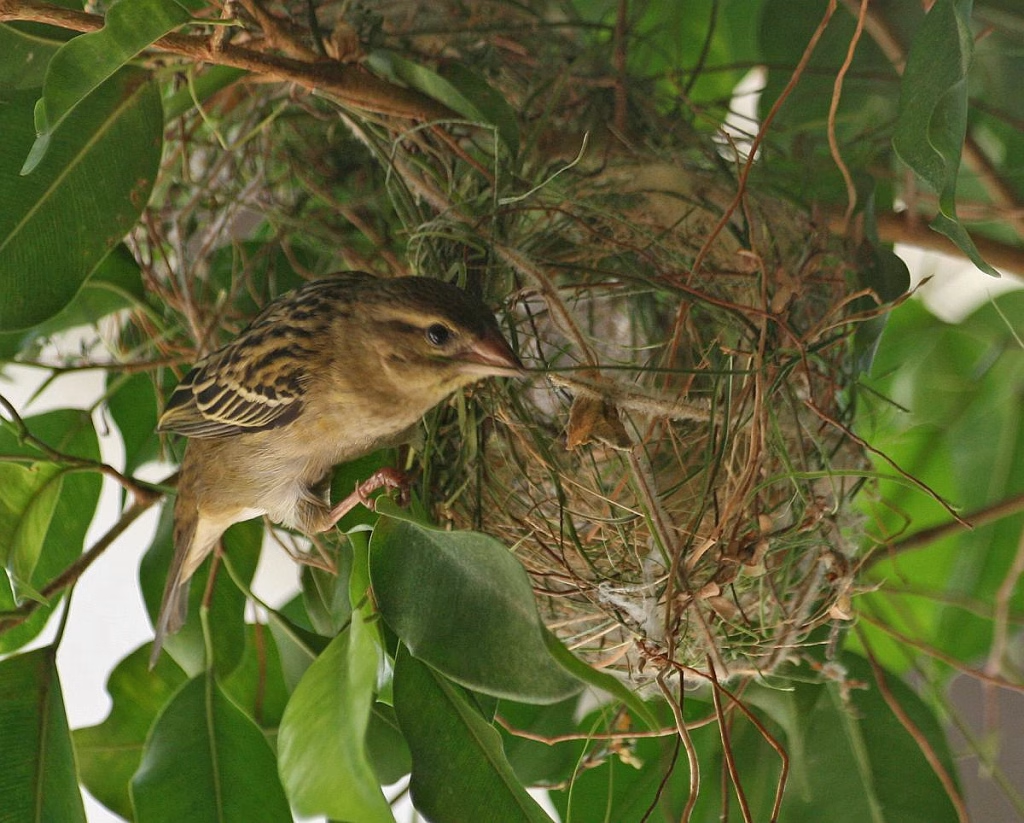
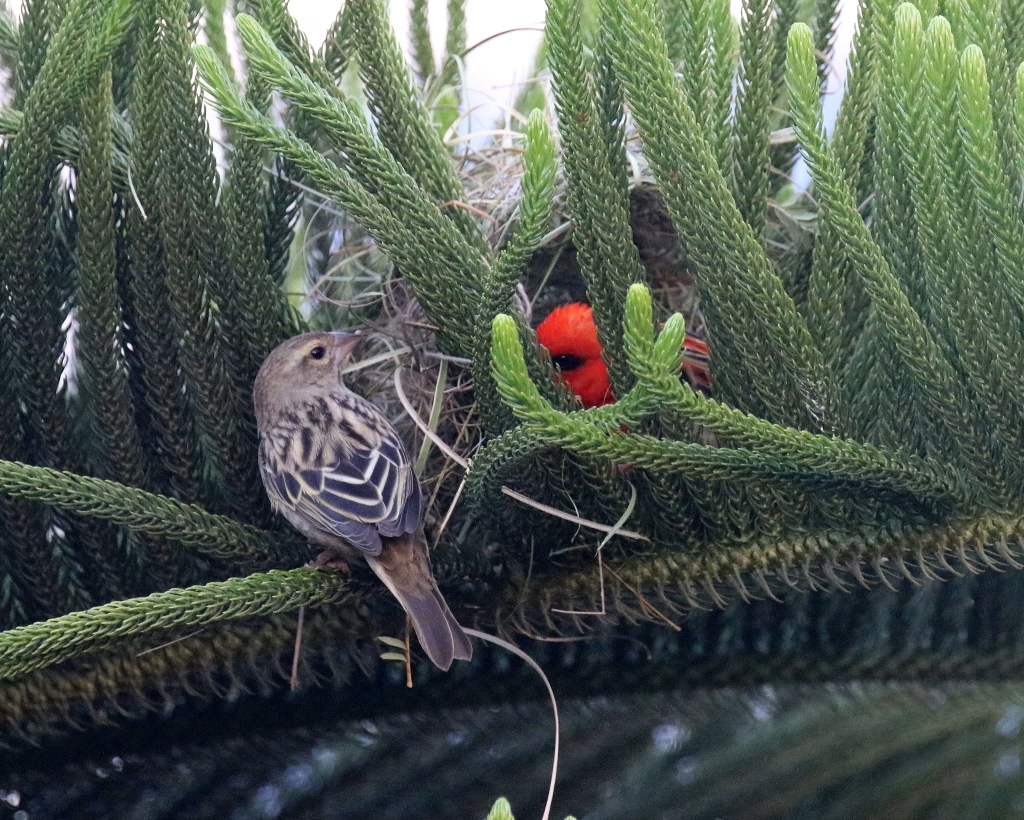
The female fody lays a clutch of two to four eggs inside the nest, which are pale blue or green. She incubates them for 11 to 14 days. Both parents share the responsibility of feeding the chicks. In two to three weeks, the fledglings are ready to leave the nest. This rapid development means the young birds will be self-sufficient before they face the challenges of the upcoming season.
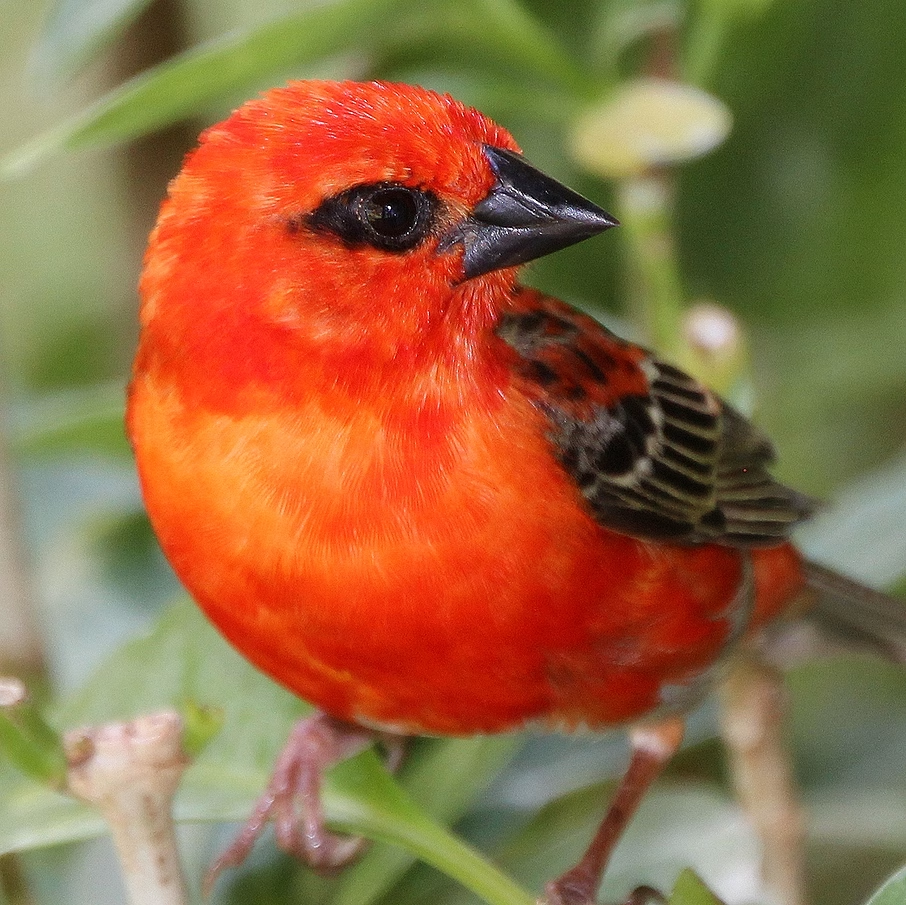
Conservation and Threats
Given its wide distribution and adaptability, the red fody is currently listed as “Least Concern” on the IUCN Red List of Threatened Species. Its ability to inhabit both native and introduced habitats has contributed significantly to its thriving populations.
However, with expansion comes challenges. In some introduced areas, the red fody is seen as an invasive species. It sometimes competes with native bird species for resources, which can lead to imbalances in local ecosystems. As a result, in certain areas, their numbers are controlled to protect endemic species.
While the red fody has shown remarkable adaptability and can even do well in urban settings, continued deforestation and land conversion can pose challenges in the future. It will be important to monitor the red fody populations to ensure there are no lurking vulnerabilities that might impact them.
